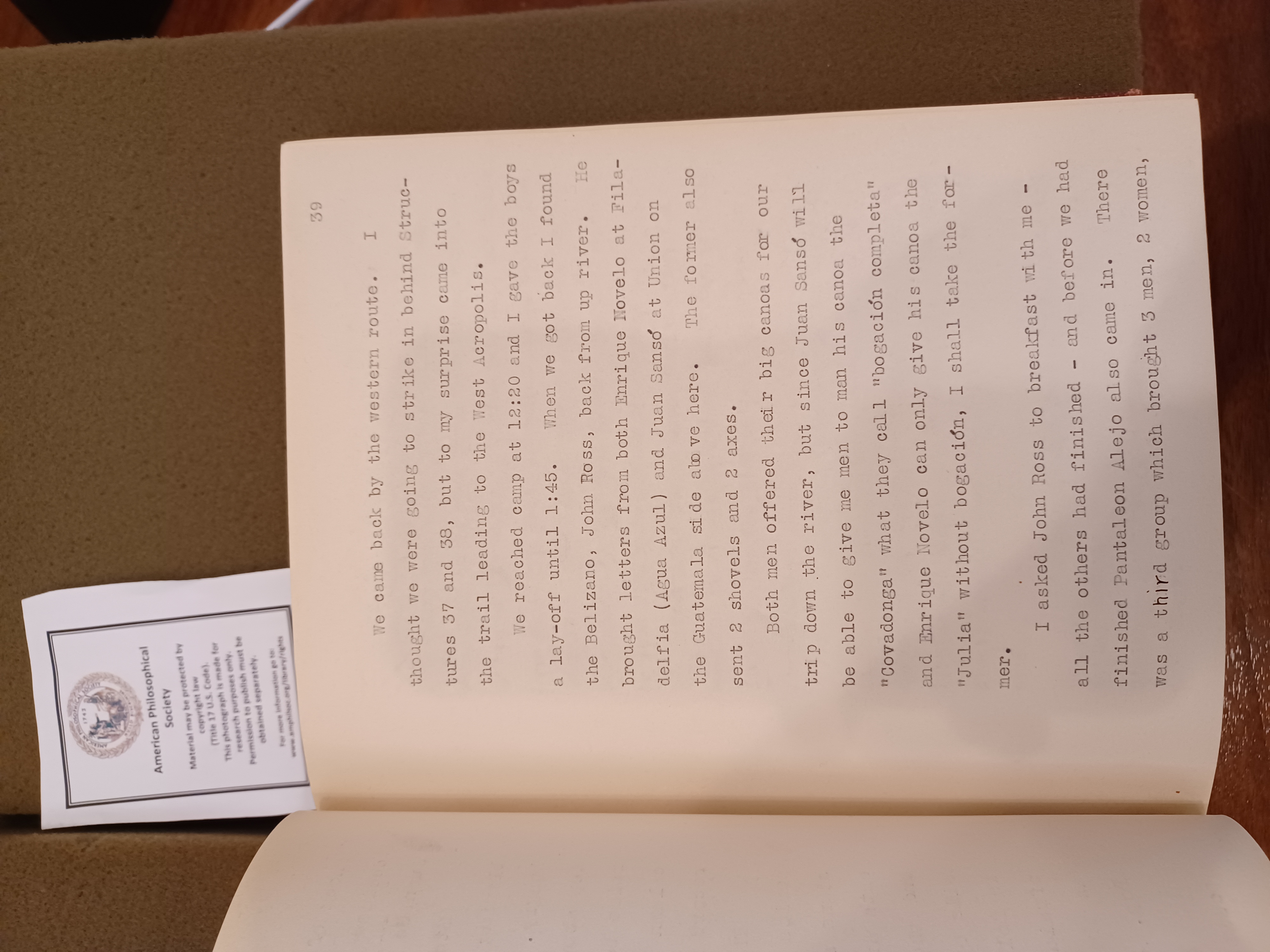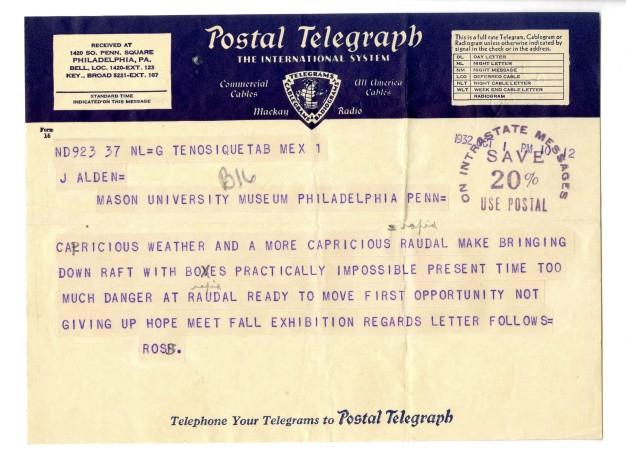Archaeological Labor and Transnationalism in Early 20th-Century Central America
Telegraph from John Ross to anthropologist John Alden Mason, 1932 October 1. John Alden Mason Collection, Box 34, Folder Ross, John. APS
Thanks to a William Shedrick Willis, Jr. Fellowship, I spent August 2023 conducting preliminary research for a book-length project on archaeological labor in Mexico. Perhaps more so than other sciences, archaeology depends on sizable labor forces. Laborers are typically hired locally, organized hierarchically, and often excluded from the production of knowledge—to archaeology’s detriment, as Allison Mickel's Those Who Shovel Are Silent convincingly shows.

I began research at the American Philosophical Society with the broad objective of locating archaeological labor. I first turned to the Sylvanus Griswold Morley Diaries, 1905-1947. Morley was an archaeologist and epigrapher with the Carnegie Institution of Washington, and I was interested in his field diaries because they document processes typically backgrounded in archaeological reports: negotiations with muleteers, everyday socializing, and, as Fernando Armstrong-Fumero observes, “an unflattering portrait of Anglo-American racial perspectives.” I had hoped that the diaries would provide a glimpse of the work often written out of formal reports, but the materials spoke to a wider range of labor than I had anticipated. For example, on an expedition to Copán, Honduras, Morley brought a letter of introduction from archaeologist Sam Lothrop to “Don Carlos Cosman, a Dutch Jew.” Cosman, he hoped, would be able to provide information on a stela that Morley had heard about from mahogany contractor Basil Booth. Cosman offered to accompany the party and introduce Morley to Felipe Contreras, one of Booth’s former workers. Contreras, in turn, took Morley to “a beautiful example of Maya Art of the Great Period,” whose date the epigrapher calculated between 500 and 520 CE.
Tracing these networks made me question an assumption that I’d hardly realized I’d been holding: that locally-hired workers and intermediaries were themselves local. For another perspective on these questions, I turned to the John Alden Mason collection. Mason, longtime curator of the Penn Museum’s American Section, directed (and later advised) the 1931-1938 excavations in Piedras Negras, Guatemala. Transnational labor was a fact of life in Piedras Negras, which sits on the border between Guatemala and Mexico. Correspondence with one John Ross illustrated some of the transnational trajectories of workers. In parallel materials that I was able to consult at the Penn Museum archives, Ross was described as “a swell person from Belize, about 45, Scotch father, Mexican mother who speaks Latin fluently and fine English, Spanish, and Maya.” Ross’ detailed, cordial letters to Mason document both his crucial role in getting the Piedras Negras monuments back to Philadelphia, and an idea of how labor in archaeology depended on—and facilitated—other forms of labor, from interpreting the pre-Hispanic past to cutting mahogany. Indeed, archaeological labor further linked the patterns of migration that brought Cosman to Honduras, the extractive industries that enabled Booth to profit from mahogany export, and the local circumstances of work that prompted Contreras to seek employment in woodcutting. I would not have known even to ask these questions, except thanks to the Society’s generous support at this early stage of the research project.

